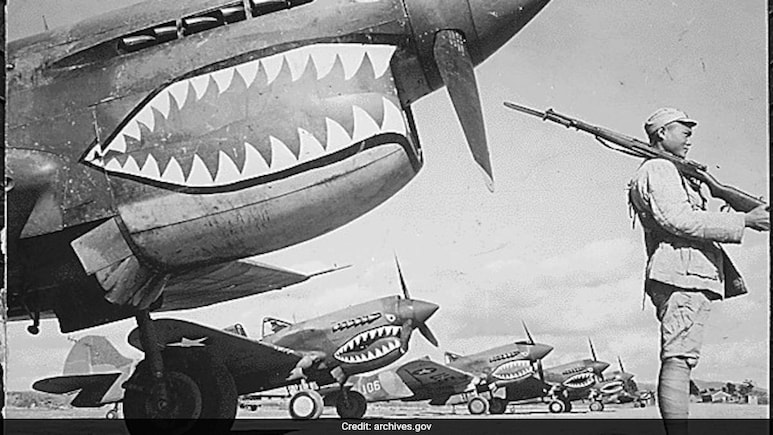
The shark's teeth painted on their planes were more of a threat than a decoration. In 1941, the Flying Tigers, Americans hired to fight in China, proved it in combat by shooting down hundreds of Japanese aircraft. The men had signed contracts offering high pay, free housing, a food allowance, and bounties for enemy kills. The mercenary work became one of the most celebrated fighting units of World War II.
A few hundred Americans took the offer. Pilots, mechanics, and support crews joined the American Volunteer Group (AVG), later immortalised as the Flying Tigers, to help China resist Imperial Japan's advance.
Their P-40 fighters, stamped with the now-iconic shark-mouth insignia, became an image that still survives in some US Air Force nose art today. The Tigers backed it up. They are credited with destroying as many as 497 Japanese aircraft while losing only 73 of their own, CNN reports.
Despite tensions between Washington and Beijing in recent years, the group remains celebrated in China.
"China always remembers the contribution and sacrifice made to it by the United States and the American people during World War II," says an entry on the Flying Tigers memorial page of China's state-run newspaper People's Daily Online.
The squadron's roots lay in desperation. By 1940, Japan's air raids had left Chinese cities defenceless. Retired US Army pilot Claire Chennault was hired to build an air force. With quiet support from Washington, he recruited Americans with the lure of salaries far above military pay.
Training in China was rough. Pilots crashed, planes broke down, and accidents killed people even before combat began. Their first real test came days after Pearl Harbor, when they intercepted Japanese bombers over Kunming. The attacks continued in Burma, where the Tigers defended Rangoon and tore through Japanese raids.
In only months, they destroyed more than 200 planes while flying no more than two dozen fighters at a time. "This tiny force met a total of a thousand-odd Japanese aircraft over Southern Burma and Thailand. In 31 encounters they destroyed 217 enemy planes and probably destroyed 43. Our losses in combat were four pilots killed in the air, one killed while strafing and one taken prisoner. Sixteen P-40's were destroyed," Chennault later recalled, as per CNN.
Their exploits made headlines back home. Hollywood released a film (Flying Tigers, 1942), Disney designed a mascot, and the Flying Tigers became American heroes.
On July 4, 1942, the AVG was absorbed into the US Army Air Corps.
When Chinese President Xi Jinping staged a massive military parade in 2015 in Beijing to mark the 70th anniversary of World War II, among the few Americans invited were relatives of Claire Chennault, the Flying Tigers' commander.
Track Latest News Live on NDTV.com and get news updates from India and around the world

